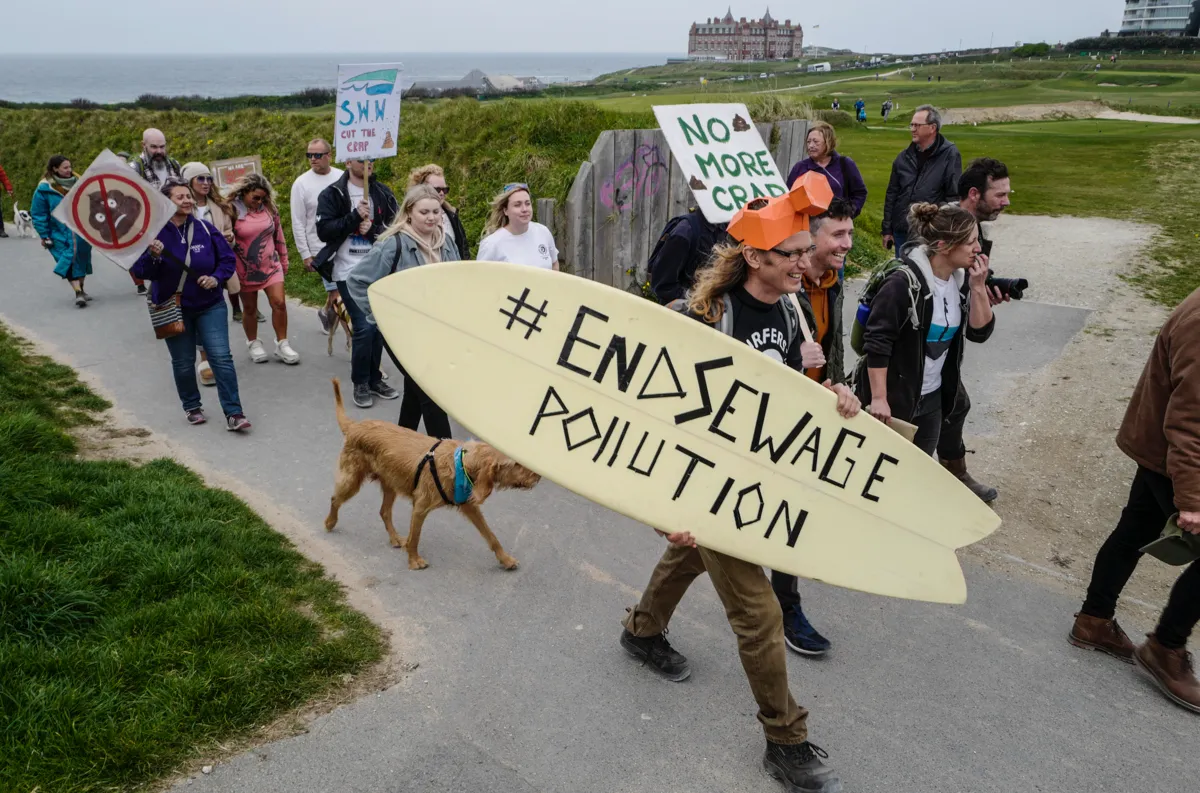In recent months there have been fresh concerns over a wave of discharges of untreated raw sewage in the UK. At one point in early September, the Safer Seas and Rivers Service, which is run by the charity Surfers Against Sewage (SAS), issued pollution warnings for more than 100 beaches. Rising awareness of these events has led to public anger about the situation. But why is this happening now, and what can actually be done about it?
Unlike some other countries which have split systems, the UK has a combined system that accepts both rainfall and sewage. This system is managed by water and sewage companies, who, if all is well, biologically treat the sewage before discharging it into the environment.
However, under extreme circumstances, such as exceptionally high rainfall, these companies are legally allowed to discharge untreated sewage. This is to avoid capacity being reached and sewage literally coming back into homes and businesses, says Dr Sarah Purnell, a researcher in aquatic environment health at the University of Brighton.
The legal model works relatively well when these events happen infrequently, notes Purnell. And since the sewage is mixed with stormwater in these events it should be highly diluted.
The problem is that these legal discharges are happening far more than many realised and may be more concentrated. Michelle Walker, technical director of The Rivers Trust, says overflows of untreated sewage are being routinely used even when it hasn't been raining.
Read more about pollution:
- Do London plane trees actually absorb pollution into their bark?
- Will electric cars reduce pollution?
- Air pollution shortening life expectancy by nearly three years
She attributes this to three causes: investment in the sewer network and treatment facilities failing to keep pace with pressures such as population growth; more intense rainstorms due to climate change; and more runoff from urban areas as more and more green spaces are paved over.
As well as being unpleasant, people swimming or boating in untreated wastewater are at risk of coming into contact with disease-causing pathogens and developing gastrointestinal illnesses or respiratory, eye and ear infections.
“If you're going to recreationally swim after rainfall events, you're more likely to come across discharges in those conditions, and the chance of you getting sick is likely to be greater,” says Purnell. Sewage discharges also significantly impact the ecological quality of rivers, she adds.
Purnell notes these overflows are likely not a new issue but have become more visible as the UK has begun to monitor them more effectively. Since 2020, the Environment Agency has required water companies to monitor and report on how often and for how long storm overflows are used. However, “we still don't know the volume of wastewater that gets discharged”, notes Purnell.
Hugo Tagholm, chief executive of the charity Surfers Against Sewage, which runs an online map showing up-to-date warnings of discharges, argues the water industry and regulatory bodies have cut financial corners in favour of “greedy shareholders”.
“Our beaches, rivers and lakes are some of our most precious natural resources, but water companies are treating them as an open sewer, devastating wildlife and posing serious health risks to all those who attempt to enjoy them.”

An Environment Agency criminal regulatory investigation into sewage discharges at wastewater treatment works in England is currently ongoing. Its initial analysis in May found that there “may have been widespread and serious non-compliance with the relevant regulations”.
In response to concerns over sewage discharges, in late August the government announced a plan requiring water companies to invest £56bn to improve all storm overflows by 2050, and by 2035 for storm overflows discharging near designated bathing waters and certain protected natural sites.
But Walker says the government's plan is “too little, too late” and doesn't go far or fast enough to tackle the problem. She says stronger regulation and enforcement of the privatised water industry is needed.
She also calls for leadership from the government to “work with nature” to reduce the pressure of rainfall entering the sewer network. Measures to do this include increasing the use of water butts and rain gardens to reduce urban runoff, using wetlands to clean up sewage pollution, and expanding ponds and dams upstream as a form of natural flood management, she says
These measures would also reduce agricultural pollution runoff, keep rivers flowing in dry periods, reduce flood risk and help to tackle the climate and biodiversity crisis, she notes.
Purnell also says nature-based solutions are useful.
“Anything we can do to slow down runoff or infiltration of that rainfall to the sewage network will help ultimately,” she says.
Areas with the most problems with discharges could be targeted to implement these sustainable drainage solutions, she adds. And all new housing estates and new builds should also be thinking about slowing down water paths.
But water and sewage companies also need to invest into upgrading their infrastructure, Purnell says, through storage or increased treatment capacities. A longer-term solution would be to redesign the UK’s system to deal with rainfall runoff separately to sewage, she adds, although noting this would be difficult and expensive and is the “least realistic” solution in the short term.
Meanwhile, the UK also needs to focus on gaining a real understanding of the current discharges, says Prof Andrew C Johnson, environmental research scientist at the UK Centre for Ecology and Hydrology.
He says two critical pieces are missed by current monitoring: the volumes of untreated sewage being discharged, and whether it is happening more frequently now than in the past. To truly assess the risks, he says, both the volume of sewage overflows and the water quality downstream from these overflows need to be measured.
Read more about the environment:
